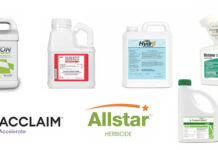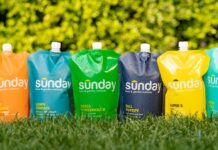It looked as if someone had tossed a plate of freshly cooked spaghetti onto the screen on the wall of the darkened golf course clubhouse. The screen showed lines going in every direction, many of them twisting and intersecting. Company names—some familiar, many unfamiliar—graced the lines.
What I was looking at was a PowerPoint image of the evolution of the U.S. agrichemical industry as it stood then—the rise and fall of companies, the mergers, the acquisitions, a graphic representation of an industry always in transition.
That image, part of a presentation during a press event sponsored by Syngenta near its Greensboro, North Carolina, facility maybe 12 or 13 years ago, came to mind again on hearing that Syngenta’s board on May 8 rejected a $45 billion takeover offer by Monsanto. It reminded me that the only thing that never changes is change itself.
As all of us are aware, Swiss-based Syngenta and Monsanto, headquartered in St. Louis, are dominant powers in the international agricultural market, as well as being incredibly important players in the U.S. turf and ornamental markets. Few weed control products are as popular as glyphosate, which Monsanto manufactures and sells, along with many other companies, under various brand names.
In the T&O market, Syngenta sells 10 different branded herbicides, including Barricade, more than 20 fungicides, popular insecticides, such as Acelepryn and Advion, and the widely used plant growth regulators, Primo Max and Trimmit.
The company supports these products with powerful informational services, such as its Greencastonline, used by thousands of North American green industry professionals daily as a portal to up-to-date information about products, weather, soil conditions and a host of other valuable resources focusing on turf and ornamental care.
Syngenta is the largest pesticide and fertilizer company in the world, accounting for 23 percent of the market. Its global sales of these products amount to slightly more than $10 billion annually, about two-thirds of its total revenues. Monsanto is the world’s biggest seed company with worldwide sales of seeds (GMO and non-GMO) approaching $9 billion, or about 26 percent of the market.
Analysts say the attraction to Monsanto of being both the largest seed and agrichemical company in the world is powerful, and they expect the St. Louis-based company to up its bid for Syngenta.
It may come to pass or it may not. If the deal is eventually done, what will it mean to the T&O market? We can all speculate as much as want, but we really won’t know. At this point all we can do is wait and stay informed.
If there’s one thing I have learned in my 43 years as a journalist is that every day brings a new challenge, opportunity or surprise. (As I reflect on that, it occurs to me that that is probably the main reason I’ve stayed in the profession, certainly one of the most privileged, poorest paying careers that any individual can follow.)
If Monsanto is ultimately successful in acquiring Syngenta, whoever still has the graphic of all the changes within the U.S. agrichemical industry will have to add another squiggly line to it.











![[VIDEO] Dickies®: Discover Workwear That’s Anything But Uniform](https://turfmagazine.com/wp-content/uploads/2023/06/1647663814-4b1a2a7742790a9b1e97a3b963477850192e1d6a9dfba9b07214a77bae25d6e3-d-218x150.jpg)






























![[VIDEO] Dickies®: Discover Workwear That’s Anything But Uniform](https://turfmagazine.com/wp-content/uploads/2023/06/1647663814-4b1a2a7742790a9b1e97a3b963477850192e1d6a9dfba9b07214a77bae25d6e3-d-324x160.jpg)